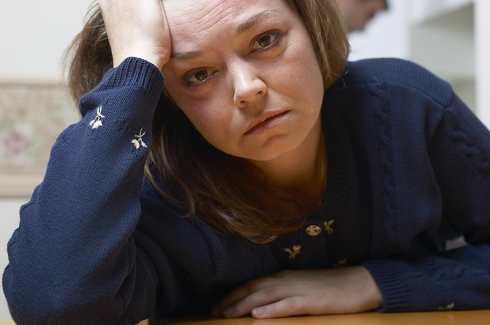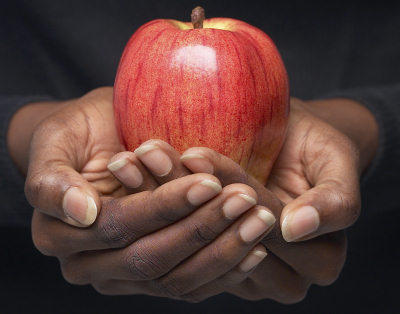
For the second year in a row, 24/7 Wall St. examined the Organisation for Economic Co-operation and Development’s report on life satisfaction in the developed world. Economic prosperity, health and a strong social support network continue to correspond highly with happiness. Once again, the United States fails to make the top 10 happiest nations in the world, while countries like Australia, Israel and all of the Scandinavian nations do.
The OECD measured more than 30 sets of data in 11 different categories, including education, health and employment. The study also asked residents of each country to rank, on a scale of 1 to 10, their general satisfaction with their lives. 24/7 Wall St. examined the 10 countries with the highest life satisfaction scores to find the strongest factors related to happiness.
Economic prosperity appears to be one of the strongest factors that relates to overall life satisfaction. Of the 10 countries with the highest levels of happiness, nine have personal incomes that are higher than the OECD average. Eight of them have among the highest disposable incomes among developed nations.
In addition, the overall regional economies of these 10 nations appear to be doing exceptionally well. Government debt as a percentage of gross domestic product in these countries is either among the smallest in the developed world, or these nations are actually running a surplus. Norway, which has the second-highest satisfaction score, has a government surplus of 162.5% of its GDP.
Employment is one of the most obvious causes of satisfaction, according to Matthias Rumpf, OECD’s chief media officer, especially long-term employment and job stability. Of the 10 countries with the highest job satisfaction rates, nine are among the 15 with the lowest long-term unemployment rates — the percentage of the population that has been unemployed for more than a year. “Those who are unemployed are generally not very happy,” Rumpf says. And long-term unemployment is even worse, he explains. While being between jobs can affect a person, “the longer you are unemployed, the worse it gets.”
After economic stability, physical and social well-being are the largest determinants for happiness. When it comes to self-reported health, eight of the 10 countries have a higher rate of citizens reporting good health than the OECD average of 70%. All but one have a higher life expectancy than the OECD average of 79.8 years. When it comes to having a strong social support network, seven of the countries have among the largest percentage of residents reporting having a friend or relative they could rely on in a case of need.
Not surprisingly, having enough leisure time affects a person’s mental health and strongly impacts happiness. According to the report, while data is incomplete, the majority of the countries with a strong sense of well-being have more leisure time each day than the OECD average of 14.76 hours (this includes sleep). The citizens of Denmark, the happiest country, have the most leisure time available per day, at 16.06 hours.
The U.S. ranks 11th in life satisfaction, just missing the top 10. This suggests that while some of these categories may impact happiness, they do not guarantee it. Despite its above-average score, the U.S. has the highest rate of disposable income in the OECD and an extremely high rate of self-reported good health. Meanwhile, the U.S. has a particularly low life expectancy for developed nations, which at 78.7 years is worse than 26 other developed nations. The U.S. also has a low job security rate and a relatively high long-term unemployment rate.
Examining 34 separate member nations, a number of emerging economies, and two additional participating countries — Brazil and Russia — the OECD’s 2012 Better Life Index report measured more than 30 indices in 11 separate categories: housing, income, jobs, community, education, the environment, civic engagement, health, life satisfaction, safety and work-life balance. 24/7 Wall St. reviewed the 10 countries in which residents reported personal well-being at an average of 7.2 out of 10 or better.
These are the happiest countries in the world.
1. Denmark
> Life satisfaction score: 7.8
> Employment rate: 73% (6th highest)
> Self-reported good health: 71% (17th highest)
> Employees working long hours: 1.92% (4th lowest)
> Disposable income: $23,213 (15th lowest)
> Educational attainment: 76% (18th lowest)
> Life expectancy: 79.3 (11th lowest)
Denmark tops the OECD ranking as the country with the most satisfied citizens among the countries studied by the OECD. At first glance, the reason is not obvious. Denmark ranks no higher than fourth in any of the categories that appear to correlate strongly with overall satisfaction. Yet, in addition to the OECD, organizations such as the World Map of Happiness and the World Database of Happiness have consistently put Denmark at the top of their list of the world’s happiest countries. A high employment rate of 73% and a low percentage of 1.92% of employees working long hours contribute to high satisfaction levels. But overall, it is hard to pin down why those Danes are so darn happy.
2. Norway
> Life satisfaction score: 7.6
> Employment rate: 75% (4th highest)
> Self-reported good health: 80% (8th highest)
> Employees working long hours: 2.66% (5th lowest)
> Disposable income: $30,465 (3rd highest)
> Educational attainment: 81% (tied – 15th highest)
> Life expectancy:81.2 (10th highest)
Of all the nations examined in the OECD’s report, Norway is among the most financially secure. Of working-age adults, 75% are employed — the fourth-best rate. Also, the average household disposable income is $30,645, the third highest among OECD nations. Norway also significantly outspends almost all other surveyed nations on health care, allocating $5,003 per person per year. This is well above the average for OECD nations of $3,060 per person per year. Norway also has one of the healthiest populations, with a life expectancy of 81.2 years and 80% claiming to be in “good” or “very good” health. Showcasing its economic strength, Norway is able to provide quality public health and education services while maintaining a budget surplus of 162.5% of GDP and an AAA rating from Standard & Poor’s Rating Services.
3. Netherlands
> Life satisfaction score: 7.5
> Employment rate: 75% (tied – 3rd highest)
> Self-reported good health: 77% (11th highest)
> Employees working long hours: 0.68% (2nd lowest)
> Disposable income: $25,740 (13th highest)
> Educational attainment: 73% (15th lowest)
> Life expectancy: 80.8 (14th highest)
The Dutch government is heavily involved in internal economic affairs, playing a “significant role … pertaining to almost every aspect of economic activity,” according to the U.S. Department of State. Judging by Netherlands’ 75% employment rate — the third highest among those surveyed — this regulated, monitored economy has thrived in recent years. Of those employed, only 0.68% work longer than 50 hours a week — the second-lowest percentage among those surveyed. By contrast, 10.86% of U.S. workers eclipse the 50 hour mark. The Dutch also rank among the top 15 in self-reported good health, life expectancy and disposable income.
4. Switzerland
> Life satisfaction score: 7.5
> Employment rate: 79% (1st highest)
> Self-reported good health: 87% (4th highest)
> Employees working long hours: 5.87% (17th highest)
> Disposable income: $27,756 (5th most)
> Educational attainment: 87% (8th highest)
> Life expectancy: 82.6 (2nd highest)
The most salient statistic with respect to well-being for the fourth ranked country on the list is employment. Switzerland tops the list in terms of working age employment rate at a whopping 79%. Switzerland also cracks the top five in three other categories: disposable income ($27,756), self-reported good health (87%) and life expectancy (82.6 years). Given these stellar numbers, it is easy to see why, according to the U.S. Department of State, “Switzerland consistently ranks high on quality of life indices.” The Swiss also have very high rates of insurance coverage and computer and Internet usage.
5. Austria
> Life satisfaction score: 7.5
> Employment rate: 72% (8th highest)
> Self-reported good health: 69% (17th lowest)
> Employees working long hours: 9.02% (10th highest)
> Disposable income: $27,541 (7th highest)
> Educational attainment: 82% (tied – 12th highest)
> Life expectancy: 80.7 (22nd lowest)
Austria stands out in many economic categories. Ranking within the top 10 in both employment rate and disposable income, the Austrians have certainly had some measure of financial success. Disposable income, in particular, stands out as a strong factor in happiness for Austrians. The country’s average annual disposable income is $27,541, while OECD nations average $22,387. This disparity may be in part attributable to the number of citizens working in excess of 50 hours a week, which, at 9.02%, ranks 10th among OECD nations.
6. Israel
> Life satisfaction score: 7.4
> Employment rate: 60% (11th lowest)
> Self-reported good health: 81% (7th highest)
> Employees working long hours: 18.92% (3rd lowest)
> Disposable income: n/a
> Educational attainment: 82% (tied – 12th highest)
> Life expectancy: 81.7 years (6th highest)
Israelis have a life expectancy of 81.7 years — sixth highest among OECD nations. The country also has a low obesity rate of 13.8%, while 81% of those surveyed report their health to be “good” or “very good.” By comparison, Americans’ life expectancy is 78.7 years, and they also have a higher obesity rate of 33.8% among adults. Despite the constant security concerns in the country, the homicide rate in Israel is in line with the OECD’s average of 2.1 murders per 100,000 people. In addition, 70% of Israelis surveyed feel safe walking home at night. Although Israelis work long hours, with 18.92% working at least 50 hours a week, life satisfaction remains high.
7. Finland
> Life satisfaction score: 7.4
> Employment rate: 68% (14th highest)
> Self-reported good health: 68% (15th lowest)
> Employees working long hours: 3.66% (8th lowest)
> Disposable income: $24,958 (14th highest)
> Educational attainment: 82% (tied – 12th highest)
> Life expectancy: 80.2 years (16th lowest)
According to OECD figures, the Finns value their free time. They devote 14.9 hours per day to leisure on average, the ninth highest among developed nations. Americans, on the other hand, rank 20th with only 14.27 hours of leisure time each day. Finland also has the eighth-lowest percentage of employees working more than 50 hours per week, at only 3.66%. When they are not working, many Finns like to indulge by taking a sauna — so many, in fact, that a country with a population of 5.3 million has 2 million saunas, much more than the number of cars in the country.
8. Australia
> Life satisfaction score: 7.4
> Employment rate: 72% (9th highest)
> Self-reported good health: 85% (5th highest)
> Employees working long hours:13.99% (4th highest)
> Disposable income: $26,927 (9th highest)
> Educational attainment: 71% (tied – 12th lowest)
> Life expectancy: 81.8 years (5th highest)
Of the countries with high life satisfaction, Australia’s citizens have comparatively little leisure time. They tend to work long hours, with nearly 14% of the population working 50 hours a week or more. Australians are healthier than most, with a life expectancy of 81.8 years — the fifth highest in the OECD. Additionally, 85% of Australians report their health to be either “good” or “very good.” The national economy has also fared well in recent years, with a post-financial crisis peak unemployment rate of only 5.7%. Presently, the Australian unemployment rate is 4.9%. Another sign of economic strength is the low government debt that stands only at 4.9% of GDP. Comparatively, the U.S. government debt represents 73.8% of GDP.
9. Canada
> Life satisfaction score: 7.4
> Employment rate: 72% (7th highest)
> Self-reported good health: 88% (3rd highest)
> Employees working long hours: 3.91% (11th lowest)
> Disposable income: $27,138 (8th highest)
> Educational attainment: 88% (5th highest)
> Life expectancy: 80.8 years (13th highest)
Canada’s score of 7.4 has much to do with the success of its health care system, a socialized plan that provides coverage to all of its citizens. As many as 88% of Canadians report their health to be “good” or “very good,” which ranks third among all nations surveyed. Canada also ranks among the top 15 nations in life expectancy. Other factors that may be contributing to Canadians’ high life satisfaction level are education and employment levels. Some 88% of Canadians have at least a high school diploma — the fifth-highest rate among the nations the OECD reviewed. Also, 72% of working-age citizens are employed — the seventh-highest rate. By comparison, Italy — one of the poorer-performing countries in these categories — has a working-age employment rate of 57%, and only 54% of its population has at least a high school diploma.
10. Sweden
> Life satisfaction score: 7.3
> Employment rate: 73% (5th highest)
> Self-reported good health: 79% (9th highest)
> Employees working long hours: 1.28% (3rd lowest)
> Disposable income: $26,633 (11th highest)
> Educational attainment: 86% (9th highest)
> Life expectancy: 81.5 years (7th highest)
In the OECD’s latest Better Life Index report, Sweden scores 7.3, the 10th-best score. Sweden has a life expectancy of 81.5 years, which is the seventh highest in the OECD. The country has extremely low pollution levels as well. According to the Better Life Index data, 97% of Swedes are satisfied with the quality of their drinking water — the second most among developed countries. The country also has the lowest levels of air pollution in the OECD. In the country, leisure is a priority for the working population as just 1.28% of Swedish employees work in excess of 50 hours per week. By comparison, 10.86% of U.S. employees work that much each week.
Tags: education, employment rate, Finland, health, life expectancy, Netherlands, Norway










